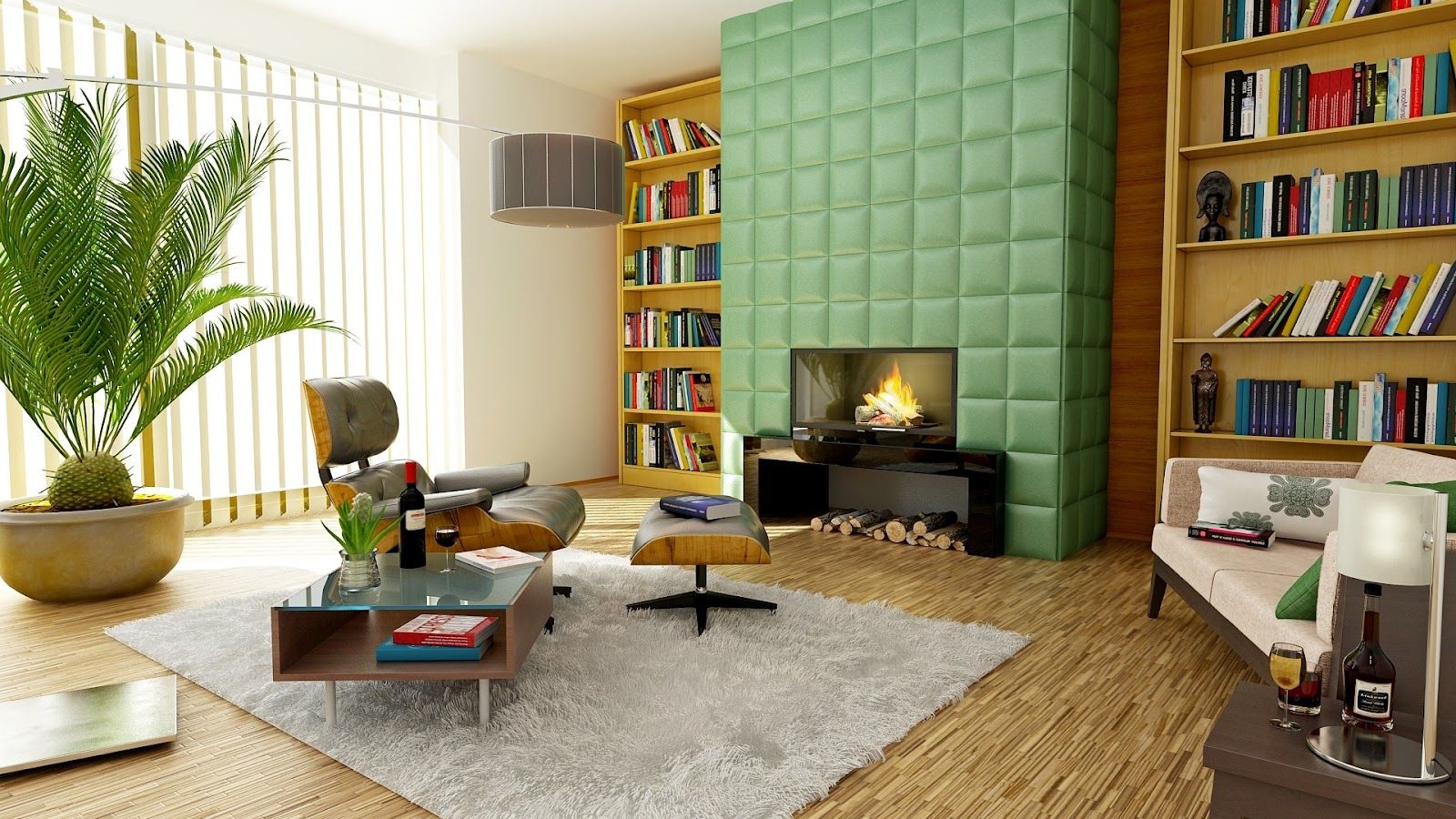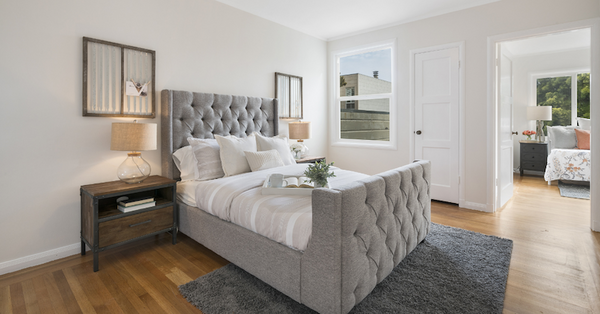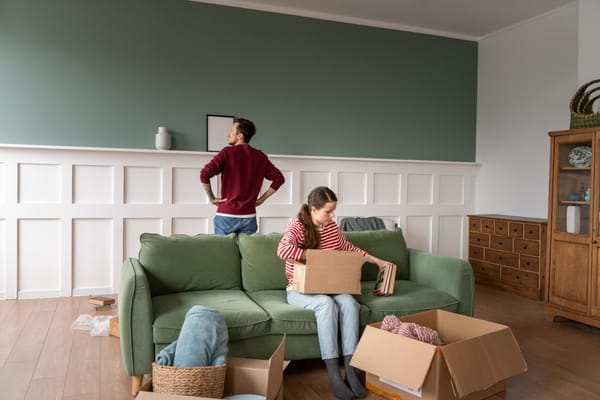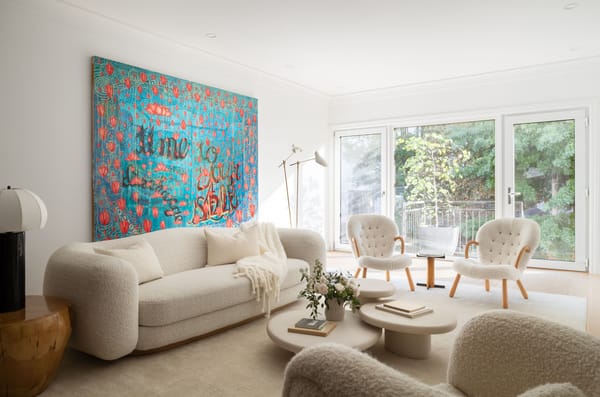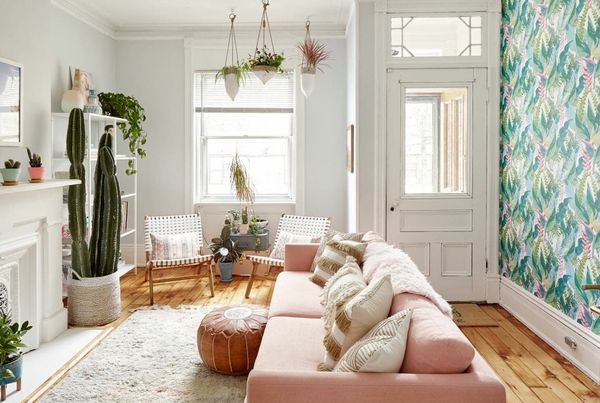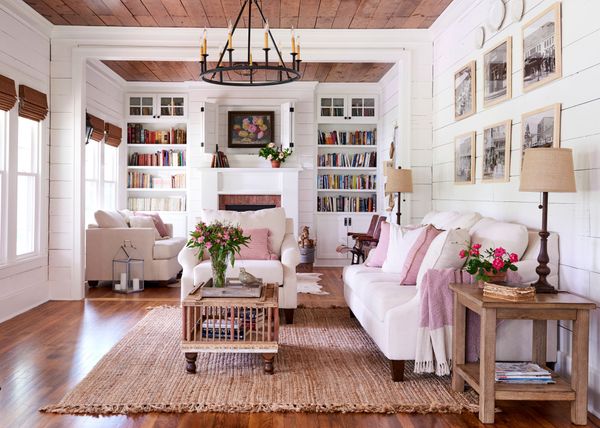The Essence of Personalized Decor: Infusing Graphic Principles
Home decor is not just about filling spaces, it's about crafting experiences. Start with a mood board, as a graphic designer would. Gather fabric samples, paint swatches, and inspiring images. Color psychology is key—use warm tones for energy in a Mediterranean-themed living room or cool hues for tranquility in a Scandinavian-style bedroom.
Contrast and balance are essential, ensuring elements complement rather than clash. For a striking effect in a modern minimalist home, consider a feature wall with a bold graphic print or a large-scale art piece that acts as a visual anchor, akin to a compelling header on a webpage. In a bohemian-styled space, mix and match textures and colors to create a rich, layered look that reflects an eclectic and artistic vibe.
Harmony in Design and Functionality: Ergonomics Meets Aesthetics
Ergonomics is as vital in decor as in user interface design. Assess your space's 'user flow'. How does one move from room to room? In a contemporary urban apartment, ensure the furniture arrangement facilitates easy movement, mimicking the intuitive navigation of a well-designed website.
Implement the 'F-pattern layout' for room arrangements. Place key items like sofas or shelves along these lines for a natural viewing experience, ideal for a classic living room setup. In a rustic farmhouse kitchen, consider 'responsive design' with modular furniture and multi-functional pieces, adapting to various needs and activities, much like a website adapts to different devices.
The Magic of Textures and Patterns: Creating Visual Hierarchy
Apply graphic design principles of hierarchy in your home using textures and patterns. A textured accent wall or a patterned rug in an industrial loft can draw the eye, similar to a bold headline on a screen. Layer different textures to add depth—combine smooth leather with rough wood in a traditional study room for contrast.
When mixing patterns, vary their scale to maintain visual interest without overwhelming the space. In a country-style bedroom, combine large floral prints with smaller gingham checks for a cozy, harmonious look. Each decor element should contribute to a cohesive look, much like parts of a user interface.
Graphic Inspirations: Bringing Posters to Life in Decor
Posters are potent expressions of personality. Just as a graphic designer selects impactful imagery, choose posters that resonate with your story. Design custom posters with VistaCreate to reflect your interests, from vintage art in a classic Victorian interior to abstract designs in a modern studio.
Try designing your own poster on https://create.vista.com/create/posters/ to add a personal touch. Consider the poster's color scheme and its enhancement of the room's visual flow, akin to how an infographic fits into a website design. In an Art Deco-inspired living room, a geometric-patterned poster can echo the era’s distinctive style, while in a minimalist space, a black-and-white typographic poster can add a touch of sophistication.
Lighting: The Unseen Artist in Ambience Creation
Lighting sets the mood and tone, akin to color usage in graphic design. Use lighting to create ambiance, similar to color gradients in a design. Combine different lighting types: ambient for overall illumination in a grand Victorian foyer, task lighting for functionality in a modern home office, and accent lighting to highlight art in a gallery-style hallway.
Consider color temperatures as well—warm lights for a cozy, intimate rustic cabin and cool lights for a brighter, alert atmosphere in a sleek, modern kitchen. Each light source should contribute to the visual balance and harmony of the space, like elements in a graphic composition.
The Sustainable Approach: Eco-Friendly Design Concepts
Sustainability in home decor mirrors eco-friendly graphic design trends. Choose materials with a low environmental impact, like bamboo in a Zen-inspired bedroom or recycled fabrics in an eco-modern living room. Upcycling adds uniqueness—turn old graphic posters into wallpaper for a retro games room or frame vintage design elements as art in a shabby chic living room.
This approach creates something nostalgic yet fresh, akin to classic design motifs used in modern contexts. Also, consider the lifecycle of your decor items, similar to how a designer considers the longevity of their creations, ensuring your choices remain timeless and adaptable.
Color Schemes: The Palette of Emotions in Home Decor
Just as a graphic designer meticulously selects a color palette to convey a brand's message, color schemes in home decor set the emotional tone of your space. In a coastal-inspired home, use blues, greens, and sandy neutrals to evoke the serenity of the sea. In contrast, a vibrant, boho-chic interior might feature a kaleidoscope of saturated hues like fuchsia, orange, and turquoise, channeling a lively, eclectic vibe.
The first step is understanding the psychology of colors—blues for calmness, reds for energy, greens for balance. Apply this in practical terms. In a modern minimalist home, opt for a monochromatic scheme with varying shades of the same color to create depth while maintaining simplicity. Layer different shades and textures within this palette to add visual interest without overwhelming the space.
Furthermore, consider the interplay of these colors with natural light. Much like a graphic design changes appearance on different screens, colors in your home transform throughout the day with changing light. In an art deco setting, metallic accents in gold or silver can interact with light to create a dynamic play of reflections and shadows, adding to the luxurious feel of the space. Use color not just as a surface treatment but as a dynamic component of your home's overall design narrative.
Final Thoughts
In conclusion, integrating graphic design principles into home decor transforms your space into a narrative of form, function, and personal expression. From the mood board to the final touches, each element should harmonize with your personal style and the functional needs of your space, creating a home that's not only visually stunning but also deeply resonant with your personal story. Your home, like any well-crafted design, is a reflection of your identity, just as much as any well-crafted design.

